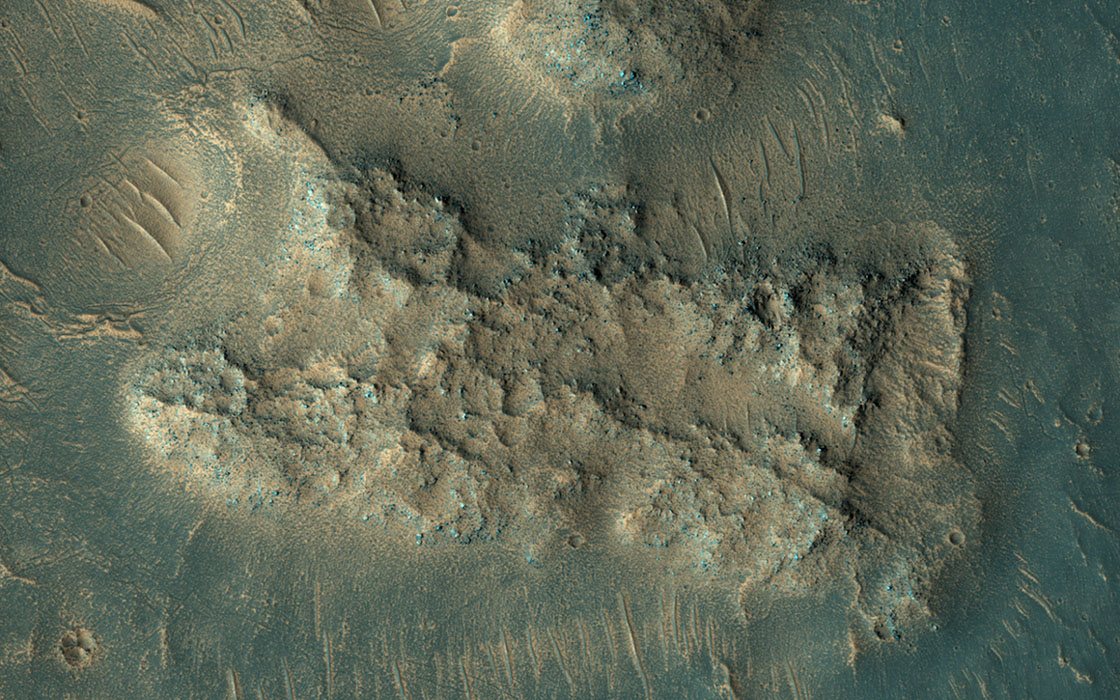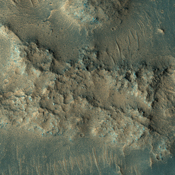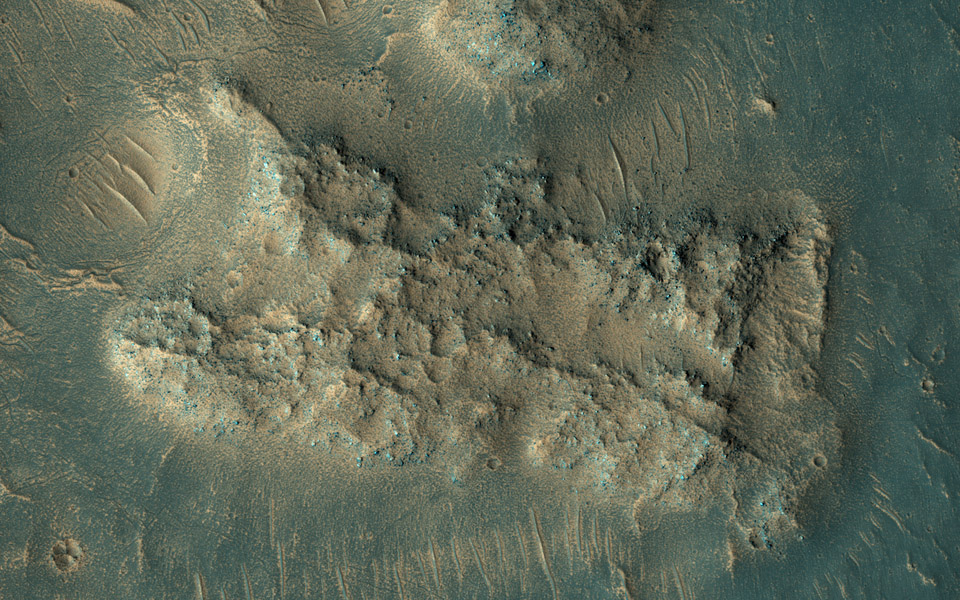This is Not the Hydrothermal Deposit You’re Looking For

| Credit | NASA/JPL-Caltech/Univ. of Arizona |
|---|---|
| Language |
|
Map Projected Browse Image
Click on image for larger version
This image was acquired on May 13, 2018 by NASA's Mars Reconnaissance Orbiter. A hotspot for exploration on Mars centers on areas that were once, or are currently, next to a significant source of heat such as volcanoes. Martian volcanoes have not been active for the last couple million years, but beneath the shifting sands and dust of the Red Planet we find old lava flows frozen in time.
These ancient lava flows may have provided a source of heat, along with liquid water or subsurface ice, to generate an environment conducive for the development of ancient life. Geological evidence for hot water interacting with rock is what we mean by hydrothermal: sites with these conditions are very difficult to identify from orbit.
One closeup view shows sand dunes scouring what appears to be a highly-cratered, old lava flow in the Tempe Terra region, located in the Northern Hemisphere. The flat, dark areas are basaltic in composition, a rock commonly found around active volcanoes, and the lighter-toned material is covered in rusted Martian dust. The recently-launched InSight lander will reveal whether Mars is geologically active internally.
The map is projected here at a scale of 50 centimeters (19.7 inches) per pixel. [The original image scale is 57.8 centimeters (22.8 inches) per pixel (with 2 x 2 binning); objects on the order of 173 centimeters (68.1 inches) across are resolved.] North is up.
The University of Arizona, Tucson, operates HiRISE, which was built by Ball Aerospace & Technologies Corp., Boulder, Colorado. NASA's Jet Propulsion Laboratory, a division of Caltech in Pasadena, California, manages the Mars Reconnaissance Orbiter Project for NASA's Science Mission Directorate, Washington.



